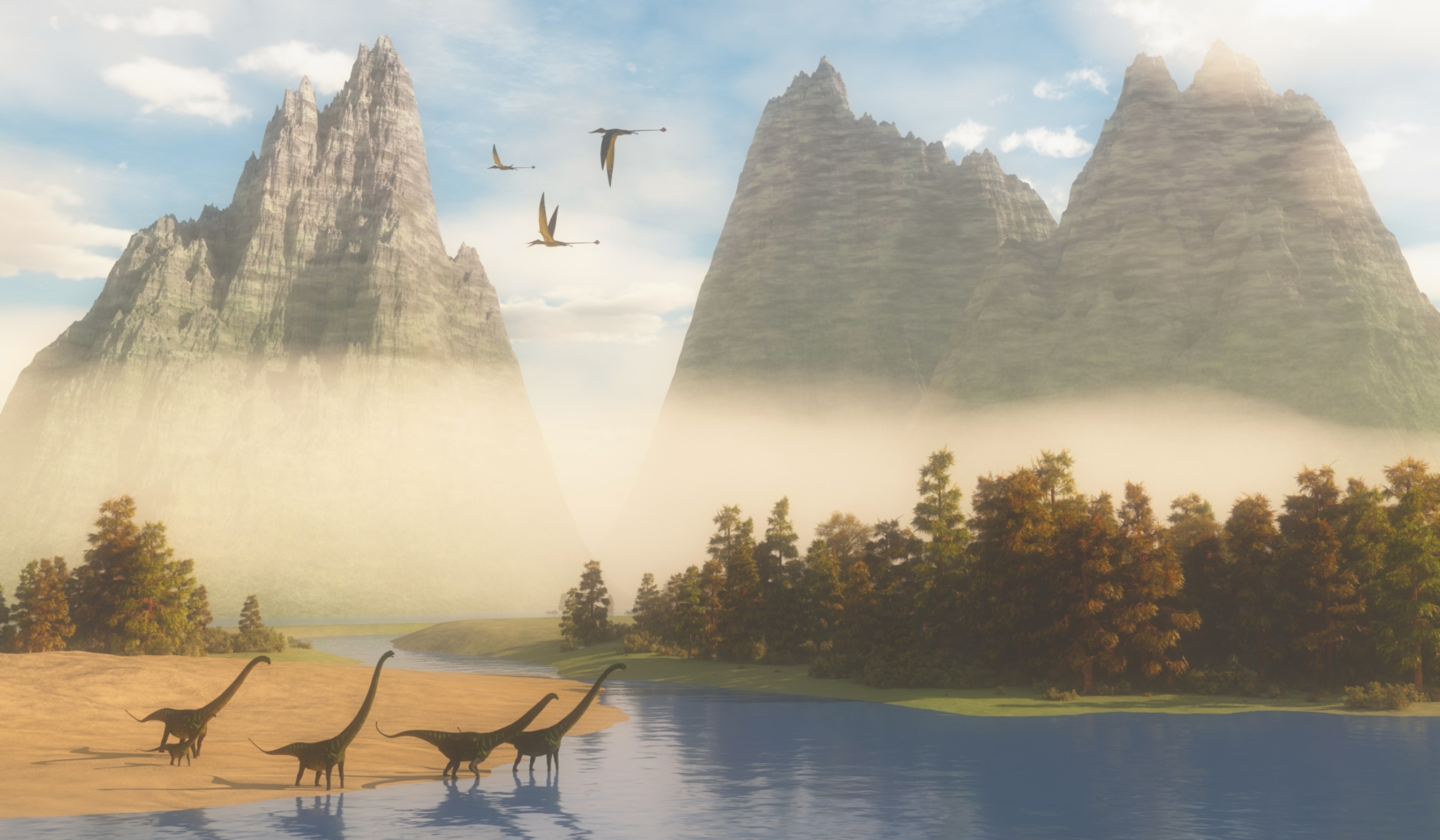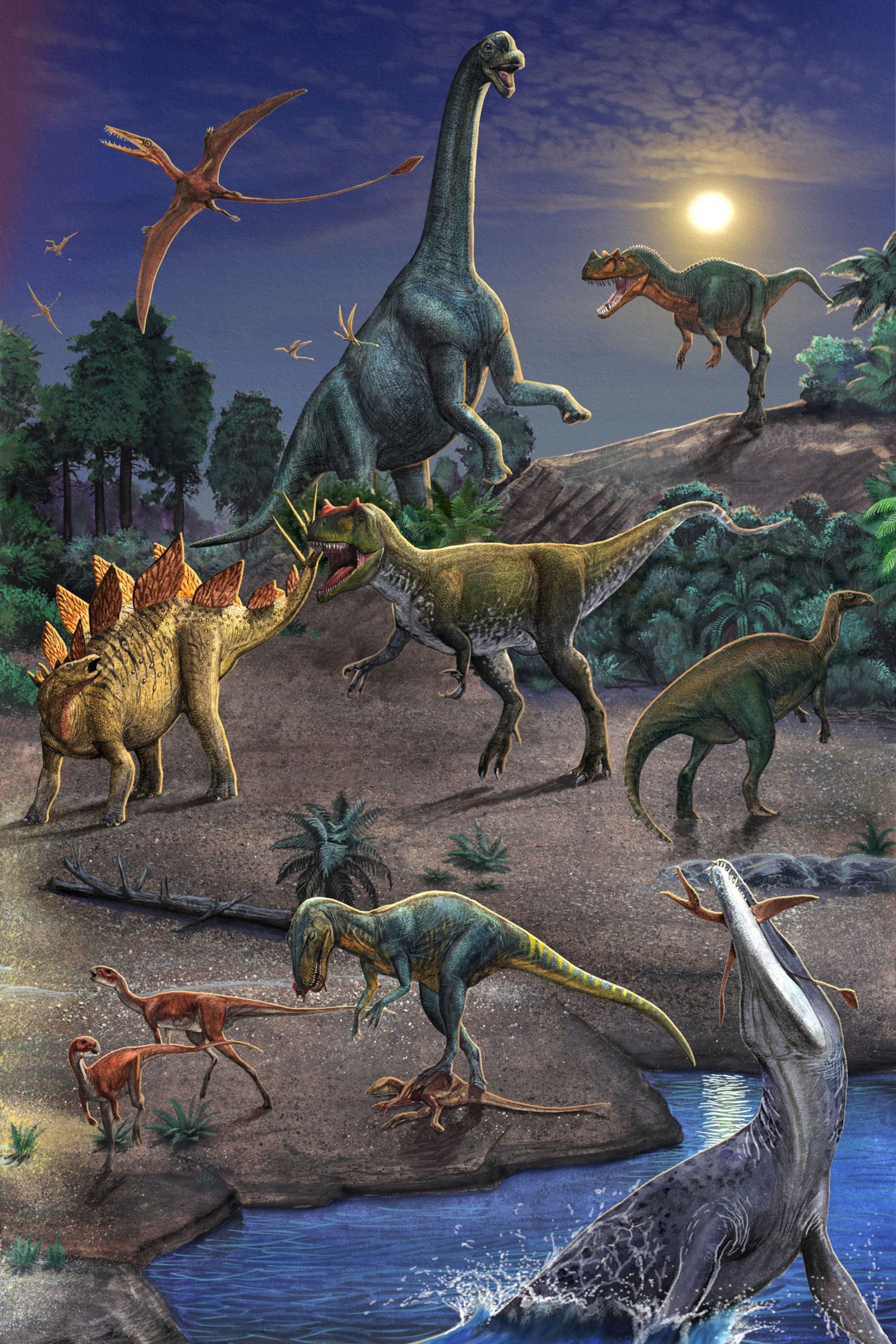What is the Jurassic period and why did it end?
The heyday of dinosaurs, the Jurassic era saw Earth’s climate change from hot and dry to humid and subtropical.

The Jurassic is a geologic period that took place about 201.3 million years to 145 million years ago and constitutes the middle part of the Mesozoic era.
The Jurassic period was named after the Jura limestone deposits in the Jura Mountains, discovered by German geologist Alexander von Humboldt. Building on this find, French scientist Alexandre Brongniart later coined the Jurassic period.
There are three Jurassic time periods: early, middle, and late. Overall, the Jurassic gives us a particularly well-preserved fossil record of prehistoric life, which included theropod dinosaurs that scientists believe evolved to become birds.
Thanks to this rich record, we know that the Jurassic was the age of dinosaurs roaming a tropical Earth filled with ferns, flowering plants, and conifers. It was also a time when sea monsters, sharks, and blood-red plankton filled inland seas borne of crumbling landmasses. Here’s what the Jurassic period was really like.
(‘Jaw-dropping’ fossil reveals epic prehistoric battle)
Environmental conditions during the Jurassic
At the start of the Jurassic era, the breakup of the supercontinent Pangaea continued and accelerated. Laurasia, the northern hemisphere, broke up into North America and Eurasia. Gondwana, the southern half, began to break up by the middle Jurassic.
(In 250 million years, this may be the only continent on Earth)
The eastern portion—Antarctica, Madagascar, India, and Australia—split from the western half, Africa and South America. New oceans flooded the spaces in between. Mountains rose on the seafloor, pushing sea levels higher and onto the continents.
All this water gave the previously hot and dry climate a humid and drippy subtropical feel. Dry deserts slowly took on a greener hue. Palm tree-like cycads were abundant, as were conifers such as araucaria and pines.
(‘Living fossil’ cycad plants are actually evolution’s comeback kings)
Ginkgoes carpeted the mid- to high northern latitudes, and podocarps, a type of conifer, were particularly successful south of the Equator. Tree ferns were also present.
(Huge fossil is oldest giant flowering tree in North America)
The oceans, especially the newly formed shallow interior seas, teemed with diverse and abundant life. At the top of the food chain were the long-necked and paddle-finned plesiosaurs, giant marine crocodiles, sharks, and rays. Fishlike ichthyosaurs, squidlike cephalopods, and coil-shelled ammonites were abundant.
Coral reefs grew in the warm waters, and sponges, snails, and mollusks flourished. Microscopic, free-floating plankton proliferated and may have turned parts of the ocean red.
(See the microscopic world of plankton in stunning detail)

Jurassic period dinosaurs
On land, dinosaurs were making their mark in a big way—literally. The plant-eating sauropod Brachiosaurus stood up to 52 feet (16 meters) tall, stretched some 85 feet (26 meters) long, and weighed more than 80 tons.
(How the world’s deadliest mass extinction actually helped the rise of dinosaurs)
Diplodocus, another sauropod, was 90 feet (27 meters) long. These dinosaurs’ sheer size may have deterred attack from Allosaurus, a bulky, meat-eating dinosaur that walked on two powerful legs.
But Allosaurus and other fleet-footed carnivores, such as the coelurosaurs, must have had occasional success. Other prey included the heavily armored stegosaurs.
(See how scientists are giving dinosaurs a modern reboot)
The earliest known bird, Archaeopteryx, took to the skies in the late Jurassic, most likely evolved from an early coelurosaurian dinosaur. Archaeopteryx had to compete for airspace with pterosaurs, flying reptiles that had been buzzing the skies since the late Triassic period. Meanwhile, insects such as leafhoppers and beetles were abundant.
(Rare fossils reveal a stunning scene from the final days of the dinosaurs)
Many of Earth’s earliest mammals scurried around dinosaur feet—ignorant that their kind would come to dominate Earth once non-avian dinosaurs were wiped out during the mass extinction at the end of the Cretaceous period.





